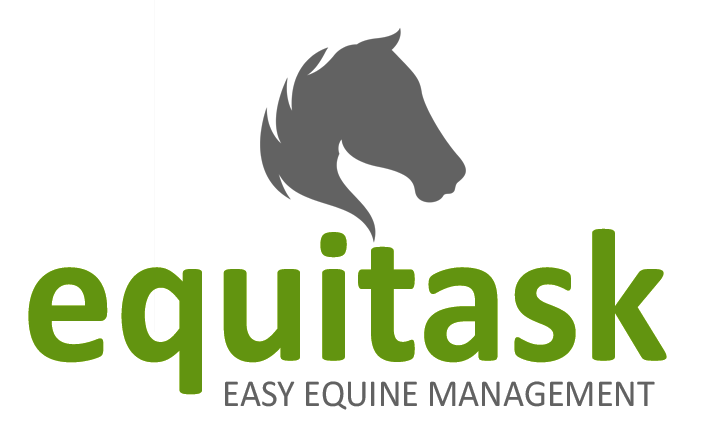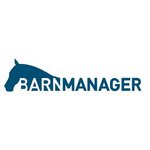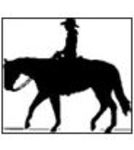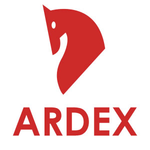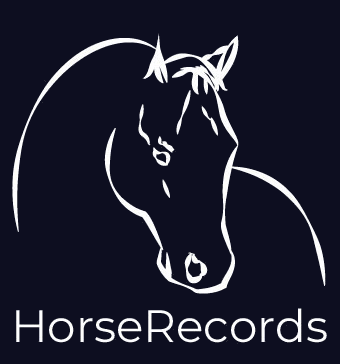What Is Horse Software?
Horse software is a specific sort of computer program that helps horse owners, trainers, and riders manage and organize horse-related information. This can include keeping track of horse health records, training schedules, competition results, financial records, and more. One of the most essential advantages of horse software is its capacity to streamline and concentrate information, making it easier for users to remember important details and stay organized.
It also enables quick and effective communication among barn employees, trainers, and owners, encouraging teamwork and collaboration. Horse software functionality and sophistication can vary, with some providing simple services like record-keeping and others giving more advanced features like nutrition management or digital training programs. As a result, before purchasing horse software, purchasers must first determine their individual requirements and budget.
Furthermore, equine software frequently includes a mobile application or web-based platform, allowing you access from anywhere at any time. This is especially handy for individuals who travel regularly for shows or own many horses in different regions. Aside from information organization, equine software can aid with data analysis and report generation.
Tracking trends and progress allows owners and trainers to make informed decisions about their horse's health and performance. When considering acquiring horse software, it is critical to ensure that it is user-friendly and interacts seamlessly with any existing systems or software used by the buyer. It is also critical to read reviews and request demonstrations to gain a better knowledge of the software's functionality and compatibility.
What Are The Recent Trends In Horse Software?
Horse software has advanced significantly in recent years, driven by technological developments and a growing demand for effective equine-related task management. As a buyer, it is critical to stay current on the latest trends in horse software in order to make an informed selection when acquiring a program.
Let's explore, the latest trends in horse software and how they can help both horse owners and equestrian experts.
1. Cloud-Based Software Solutions: One of the most significant changes in horse software is the migration to cloud-based solutions. With the rising usage of smartphones and tablets, horse owners and professionals want to be able to access their data at any time and from any location. Cloud-based software enables users to store and retrieve data remotely, making it easier to manage horses from multiple places. It also eliminates the need for costly servers and IT infrastructure, making it a more economical choice.
2. Integration Of Wearable: Technology Wearable technology is increasingly prevalent in the equestrian sector. Horse software programs can now communicate with various devices, such as fitness trackers and GPS trackers, to collect information about a horse's health, exercise, and position. This not only gives significant insights for horse owners, but also improves horse tracking and monitoring efficiency.
3. Customization Options: Every horse owner and equine professional has different horse management demands and preferences. That is why horse software systems now provide a variety of customization options to allow users to personalize the program to their unique needs. These possibilities, which range from customisable dashboards to the creation of individual horse profiles, provide a more personalized and efficient experience.
4. Mobile Applications: Mobile applications have revolutionized horse software. These applications make it simple to handle horses on the go, whether at a show or out on the trail. They also provide notices of impending appointments, reminders for feeding or medication schedules, and the ability to log information in real time.
5. AI And Predictive Analytics: Artificial intelligence (AI) and predictive analytics have made their way into the horse software sector, offering superior decision-making capabilities. These technologies employ data and algorithms to learn from past patterns and anticipate future behavior or outcomes. This can help to manage horses' health, performance, and breeding, among other things.
Benefits Of Using Horse Software
Horse software is an extremely useful tool for horse owners, trainers, and other equestrian professionals. It provides a variety of features and benefits that can considerably improve horse management and care.
Here are some of the main benefits of using horse software:
1. Streamlines Management Tasks: With horse software, all necessary tasks such as scheduling, billing, record keeping, and communication can be completed in a single location. This streamlines the management process and lowers the likelihood of mistakes and oversights.
2. Accurate Record Keeping: Keeping track of each horse's health, training, and competition history can be a challenge. Horse software enables accurate and extensive record keeping, making it easier to track progress and spot potential difficulties.
3. Improved Communication: Horse software frequently incorporates communication options such as messaging and calendar sharing, making it easier to coordinate and communicate with trainers, owners, and other members of the horse's care team.
4. Customization Options: Every horse is unique, and horse software can be customized to meet each horse's specific demands. This may include personalized training regimens, dietary tracking, and health alerts.
5. Financial Management: Horse software contains functions for budgeting, invoicing, and spending management. This enables owners and trainers to gain a better grasp of their finances and make sound judgments.
6. Accessible Anywhere: Many horse software products are now cloud-based, which means they can be accessed from any device with an internet connection. This provides easy access to information and updates while on the go.
7. Data Analysis: Horse software frequently includes reporting and analysis tools, which enable a better knowledge of training and health trends. This can help you make better judgments and manage your horses more effectively.
8. Collaboration: In a team situation, such as a barn or training facility, horse software enables many users and collaboration. This increases efficiency and collaboration among team members.
9. Organization: By storing all of the relevant information in one place, equine software makes everything more organized and accessible. This saves you the trouble of having to browse through several physical files or documents.
10. Time-Saving: Overall, using horse software can save you time that you could spend with your horses. By automating duties and streamlining processes, you may devote more time to horse training, riding, and care.
Important Factors To Consider While Purchasing Horse Software?
When selecting horse software, it's critical to thoroughly weigh your options in order to find the best fit for your individual requirements.
Here are some essential elements to consider while making your decision:
1. Software Type: Horse software is available in a variety of formats, each tailored for a specific purpose, such as record-keeping, health management, or training. Before making a purchase, define your needs and select the software that best meets them.
2. Usability: Horse software should be user-friendly and require little training to run. It should also have a clear and straightforward interface for easy navigation. To confirm that the software is user-friendly, use a demo version or read reviews.
3. Compatibility: Make sure the program you're considering is compatible with your operating system and any other devices you may use. This will prevent compatibility difficulties and enable a seamless integration with your existing systems.
4. Features And Customisation: Look for software that includes a variety of features and customization choices to meet your individual requirements. This can include services such as expense tracking, appointment scheduling, record management, and training program development. A customisable program will allow you to tailor it to your specific requirements.
5. Customer Support: A solid customer support system is required for any software purchase. Look for software that provides dependable and easily accessible customer support, as well as resources such as manuals and tutorials in the event that you require assistance.
6. Reputation And Reviews: Before making a decision, conduct research on the software's reputation and reviews. This will help you better understand its performance, dependability, and client satisfaction.
7. Pricing: Horse software is available at a variety of rates, so choose one that fits your budget. However, do not sacrifice quality and features for a reduced price. Consider the value the software will provide to your operations and make an informed decision accordingly.
What Are The Key Features To Look For In Horse Software?
Introduction: Horse software is a must-have tool for any equestrian or horse industry expert. It aids with the management and organization of numerous areas of horse management and care, including scheduling, health records, financial management, and other tasks. With so many horse software alternatives available on the market, it might be difficult to find the best one for your unique needs.
We'll go over the important features to look for in horse software so you can make an informed purchase.
1. User-Friendly Interface: The first and most important consideration when selecting horse software is the user interface. A user-friendly and intuitive interface is vital for easier navigation and usage. It should be simple to learn and apply, especially for those without extensive technical knowledge. A confusing interface can reduce the software's effectiveness and cause irritation, wasting both time and money.
2. Customization Options: Each horse owner and trainer has a unique approach to managing and caring for their horses. As a result, it is critical to look for horse software that provides customization choices. It should allow you to add custom fields and categories based on your individual requirements. This feature allows you to adjust the software to your specific horse management skills, making it more efficient and relevant.
3. Comprehensive Health And Wellness Management: Horses' health and wellness are extremely important. Horse software should have tools for maintaining complete health records, such as immunizations, medications, injuries, and food. It should also enable the scheduling and tracking of normal medical appointments, such as farrier or veterinary visits. The software should also allow for the integration of external health devices such as heart rate monitors and GPS trackers.
4. Scheduling And Task Management: Managing a horse's schedule can be difficult, especially for those who have several horses. Look for software that includes scheduling and task management capabilities to help you stay on top of appointments, contests, training sessions, and more. It should also include a reminder mechanism to prevent you from missing any key tasks or events.
5. Financial Management: Horse ownership and training may be costly, so keeping track of spending and income is critical to financial stability. As a result, it is critical to use horse software that has extensive financial management capabilities. It should allow you to keep track of horse-related expenses such as care, training, and competitions. It should also include features for payment management, invoice tracking, and financial reporting.
6. Cloud-Based Or Mobile Compatibility: In today's world, mobility and accessibility are critical to effective management. As a result, horse software should be cloud-based or available as a mobile application. This feature enables customers to access the software and manage their horses' information from anywhere, at any time, and on any device.
Why Do Businesses Need Horse Software?
Horse software has emerged as a crucial tool for horse enterprises. One might question why corporations require horse software. The solution is simple: streamline operations, boost efficiency, and optimize profitability. Let's look more into how horse software can help your business. First and foremost, equine software assists businesses in managing their day-to-day operations.
Businesses can easily manage duties and ensure everything runs well by using services like scheduling, invoicing, and inventory management. This not only saves time, but also lowers the likelihood of errors and oversights. Furthermore, horse software enables firms to track and analyze their financials. Businesses that centralize financial data can better analyze their spending, earnings, and find opportunities for development.
This is critical for making educated decisions and ensuring financial stability. Another key benefit of horse software is its capacity to promote communication and collaboration within the organization. Task assignments, chat, and shared calendars enable team members to stay connected and informed about key developments and deadlines. This encourages teamwork and efficiency, ultimately driving the business's success.
Furthermore, horse software can help you manage your horses' health. Businesses can safeguard their horses' well-being and keep accurate medical records by using features like electronic health records and vaccination and appointment reminders. In addition, horse software provides marketing and customer management solutions.
Businesses can use capabilities like email marketing, customer databases, and appointment reminders to acquire new customers, retain existing ones, and generate income through focused marketing campaigns. Finally, horse software can help businesses stay organized and in compliance with rules. With features such as digital record-keeping and data security protections, firms may simply meet regulatory obligations while avoiding potential penalties or legal difficulties.
How Much Time Is Required To Implement Horse Software?
The time necessary to implement horse software varies depending on a number of factors, including the software selected and the complexity of your operation. In general, the process can last from a few weeks to several months. To begin, it is vital to know that equine software implementation often includes an onboarding and setup procedure.
This may include data migration, customization, and user training. These first processes may take several weeks to complete, depending on the size and scope of your company. Depending on the software's features and usefulness, users may experience a learning curve. This can take anywhere from a few days to a few weeks, depending on the complexity of the software and the quality of training provided.
In addition, the installation process may involve integrating the software with other systems, such as accounting or inventory management software. This may add to the overall timeline, but it is an important step in ensuring that all of your systems work together seamlessly. It's vital to remember that implementing horse software isn't a one-time thing.
Ongoing maintenance, upgrades, and training may be required to guarantee that the program meets your requirements and addresses any new difficulties that occur. Overall, the time required to implement equine software is determined by your individual business objectives and software solution. To guarantee a seamless and effective installation, thoroughly consider your options and select a vendor who provides complete support and training.
What Is The Level Of Customization Available In Horse Software?
When it comes to horse software, personalization is a crucial consideration. As technology advances, horse owners and trainers develop more particular demands and preferences for managing their horses and companies. Thus, the flexibility to tailor the software to best meet their specific needs is critical. The extent of customisation in horse software varies with application.
Some software may allow for minimal customization, whilst others may provide more advanced possibilities. It is critical to conduct extensive study and compare several software solutions to determine the level of customisation that best meets your requirements. Data entry is one of the most common areas for customisation in horse software. This includes the ability to enter and organize data about your horses, such as their medical history, training program, and competition results.
Some software also supports custom fields, allowing you to track certain details that are relevant to you. Another key part of customisation is the ability to tailor the software interface to your preferences. This could include selecting a color scheme, adding your logo, and organizing the layout in a way that is most comfortable for you.
Furthermore, some software may have several user levels, allowing you to grant access and permissions to various personnel inside your organization. Furthermore, the ability to interact with other applications and devices is a critical component of customisation. This enables seamless data transmission and syncing across multiple tools and platforms, including accounting software, communication tools, and wearable technology devices.
It is also worth noting that the extent of customisation may vary depending on the sort of horse software under consideration. For example, management software may be more customizable than scheduling or billing software. As a result, you must first identify the exact features and functionalities you desire and then select software that allows for a sufficient amount of customization in those areas.
Which Industries Can Benefit The Most From Horse Software?
Horse software is a versatile and essential instrument that may help a wide variety of companies. Horse software has numerous features and benefits that can improve efficiency, productivity, and organization for both equestrian enterprises and enthusiasts.
We'll look at which sectors can gain the most from integrating horse software into their daily operations.
1. Equestrian Facilities: The equestrian sector is one of the most visible and direct beneficiaries of horse software. Horse software can be quite useful for managing day-to-day operations at equestrian facilities, such as recording horse and rider timetables, lesson and clinic bookings, and client information. Horse software may also help with billing and invoicing, staff administration, and inventory tracking, making it a comprehensive solution for equestrian enterprises.
2. Equine Veterinary Clinics: Equine veterinarian clinics are another industry that stands to benefit substantially from horse software. Horse software can help veterinarians manage patient information, schedule appointments, and track medications, making it easier to deliver comprehensive treatment to equine patients. It can also help with administrative responsibilities like invoicing and billing, allowing veterinarians to devote more time to their patients.
3. Equestrian Event Management: Horse software can also be useful for individuals in charge of organizing equine events like horse exhibitions, contests, and rodeos. It can help you organize entries, plan events, and manage results. Horse software may also help with event marketing and promotion, making it a valuable resource for both event organizers and participants.
4. Horse Trainers: Horse trainers that work with a large number of clients and animals may find that horse software is quite beneficial. It can help you schedule training sessions and lessons, track horse and rider development, and manage client information and payments. Horse software allows trainers to streamline their operations and focus on what they do best: training horses and riders.
5. Horse Owners And Enthusiasts: Individual horse owners and hobbyists can profit from horse software. Whether you have one horse or an entire stable, horse software can help you organize and monitor crucial information like vet appointments, training sessions, and expenses. It can also help you create and manage training and diet routines, ensuring the best possible care for your equine friend.
Conclusion
To summarize, selecting the best horse software for your needs can significantly improve your management and organizational processes, resulting in increased efficiency and production in your equine business or hobby. Before making a purchase, carefully consider your individual requirements and objectives, as well as the characteristics and capabilities of various software solutions.
Consider issues such as device compatibility and data accessibility, as well as the software provider's pricing and customer service. With the proper horse software, you can streamline your operations, improve communication and collaboration, and, as a result, improve your whole horse experience.

